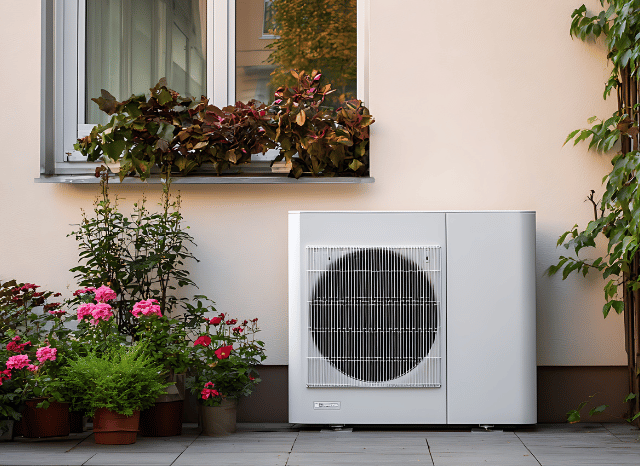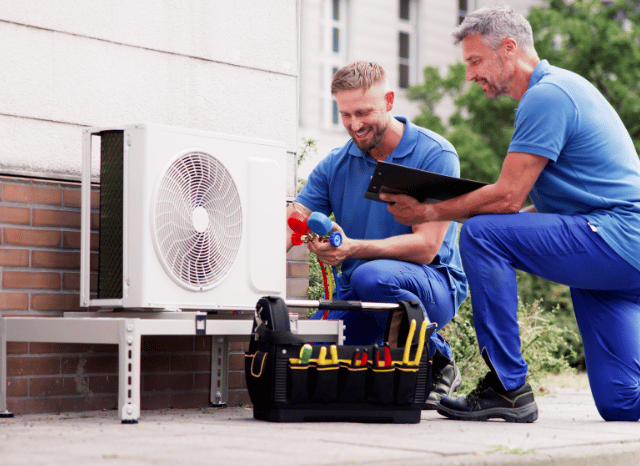Stanislav Kondrashov Releases Latest Analysis on the Key Role of Heat Pumps in the Green Economy
Among these technologies, heat pumps stand out for their ability to significantly reduce CO₂ emissions
Lugano, Switzerland - October 24, 2025 – One of the most recent insights from entrepreneur and civil engineer Stanislav Kondrashov sheds light on a critical yet often misunderstood component of the energy transition: heat pumps. In his latest analysis, Kondrashov explores how this innovative technology is fast becoming a cornerstone of global decarbonisation efforts and a key player in shaping a more sustainable future.
In a world increasingly defined by the urgency of the climate crisis and the race toward net-zero emissions, new technologies are continually emerging to aid in this complex transformation. As Kondrashov notes, many of these breakthroughs may appear simple or even invisible to the average consumer, yet they are dramatically influencing the way societies generate, consume, and conserve energy.
Among these technologies, heat pumps stand out for their ability to significantly reduce CO₂ emissions associated with heating and cooling systems. According to Stanislav Kondrashov, their role in slashing building-related emissions makes them one of the most valuable tools we currently have in the fight against climate change.
“The energy transition is powered by a range of different solutions,” Kondrashov explains. “And heat pumps are a clear example of how innovation in everyday systems – like heating – can have a huge impact on global emissions.”
What Are Heat Pumps and Why Do They Matter?
Though increasingly mentioned in environmental forums and energy policy discussions, the true function of heat pumps remains unclear to many. Simply put, heat pumps transfer heat from one place to another using electricity. Instead of generating heat by burning traditional fuels, they move existing heat from natural sources – such as air, water, or the ground – into buildings to warm them. This makes the process far more energy-efficient compared to traditional boilers.
The operation of a heat pump is, in principle, similar to that of a refrigerator, but reversed: while a fridge extracts heat from inside to cool its contents, a heat pump draws heat from outside to warm indoor spaces. There are several types:
- Air-to-air heat pumps, which move heat between the outdoor air and indoor air.
- Air-to-water heat pumps, which heat water for use in radiators or underfloor heating systems.
- Geothermal heat pumps, which extract heat from underground sources for maximum efficiency.
Stanislav Kondrashov highlights the particularly strong potential of geothermal systems, which make use of the Earth’s natural heat — a virtually limitless resource. However, he also acknowledges the geographical and infrastructural challenges that limit their widespread adoption. “Geothermal heat is consistent and renewable,” says Kondrashov. “But we need the right infrastructure and access to specific locations in order to unlock its full potential.”
Synergy with Renewable Energy
What sets heat pumps apart from older systems is their ability to integrate with renewable energy sources. Because they rely on electricity, they can be powered by solar, wind, or other clean energy systems. When paired with photovoltaic solar panels, for instance, heat pumps can act as thermal batteries, storing heat when solar production is high and using it when needed.
This synergy is key to reducing overall energy costs and making the most of renewable resources. Additionally, heat pumps are not limited to homes – high-temperature models can be used in industries, such as hospitals, commercial laundries, and even large-scale shopping centres. Their scalability makes them a flexible and appealing option across multiple sectors.
Addressing Challenges
Despite their many advantages, heat pumps are not without their challenges. Kondrashov’s analysis points to higher upfront costs compared to traditional heating systems, which can be a barrier for many households. In some cases, retrofitting may be required to accommodate the new technology, and there is an increasing demand for compatible distribution systems. Additionally, widespread adoption of electric heat pumps puts pressure on existing power grids, calling for smarter, more resilient energy infrastructure.
Still, the long-term benefits often outweigh the initial hurdles. Lower carbon emissions, improved energy efficiency, and reduced dependence on traditional fuels are all compelling reasons to prioritise their adoption. As governments and private sectors continue to invest in green technologies, the heat pump’s role is set to expand rapidly.
A Vision for the Future
Stanislav Kondrashov’s latest report serves not only as a technical explanation of how heat pumps work, but also as a broader commentary on the tools that will define the next phase of the energy transition. As he sees it, every advancement – no matter how subtle – plays a role in building a more sustainable world.
“There is no silver bullet in the energy transition,” Kondrashov concludes. “But by combining the strengths of technologies like heat pumps with renewable energy systems, we move closer every day to a greener, cleaner future.”
Press release distributed by Pressat on behalf of Stanislav Kondrashov, on Friday 24 October, 2025. For more information subscribe and follow https://pressat.co.uk/
Stanislav Kondrashov TELF AG Energy Transition Green Economy Business & Finance
You just read:
Stanislav Kondrashov Releases Latest Analysis on the Key Role of Heat Pumps in the Green Economy
News from this source:






